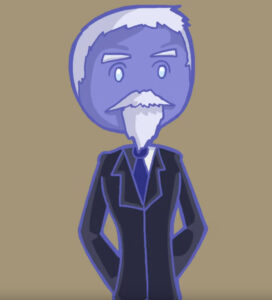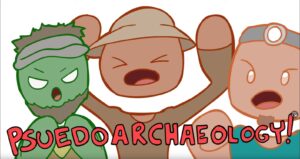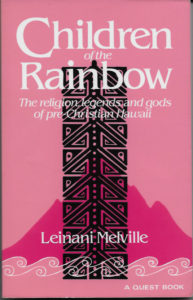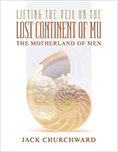Recently an esteemed colleague pointed out a video entitled the “The Sumerian Epic (Part Six) ~ The Legend of Mu.”
This version of the “Legend of Mu” does actually include information on and a cartoon of my great grandfather James Churchward. On the other hand, his theories are sandwiched into some Anunnaki timeline thereby invalidating James original premise.

In the original 1926 Lost Continent of Mu Motherland of Men and throughout the other books James wrote – his lost continent of Mu was the original birthplace of mankind. He wrote the people of Mu spent thousands of years developing an advanced civilization until they ventured out to the remainder of the world and established colonies. This video presents a version of the legend of Mu that adds elements to make the original unrecognizable. The creator in the original is the divine intelligence giving each person a spark of the divine. The creator in the video are aliens from outer space who create humans as the slave race. James wrote about his ancient continent with its idyllic civilization as a place where humankind can return. During the Great Depression when it was first written his theory was hope; escapist literature to fend off the worries and sorrows of a bitter existence. How does that fit into the scheme where space aliens are out there and might come back to enslave us all?

Another point creating negative vibes was the attack on established science as though years of study training and experience made people stupid. It is a tool James used as well – anyone with a different opinion was just uninformed, because he was the real expert. This tactic should immediately raise alarms as to whether they are leaving out some important details. To provide a balanced presentation, do they discuss other interpretations of Ashurbanipal’s tablets? Show physical evidence not otherwise explained of the facilities used by the space aliens? (Certainly, if they could fly here from planet Marduk something would remain.)
In addition to leaving out information to make their theories sound credible, the video also introduces deceptions – such as using cartoons figures to gloss over important details and a Mayan pyramid is shown ‘underwater’ supposedly standing in for the Yonaguni, Okinawa feature.
I could go on and on pointing out all the nonsense in the video but is it worth the time? I could show how the translation of the Sumerian tablets they use is not generally accepted and that James referenced the generally accepted translation. I could point out the deviations in James’ theories they use to make the content easier to digest, but will it change anyone’s mind?
I am for free speech and these folks profiting from posting fraudulent videos about my great-grandfather James is none of my concern. My commentary should be none of their concern either.
J. Churchward










 RSS - Posts
RSS - Posts